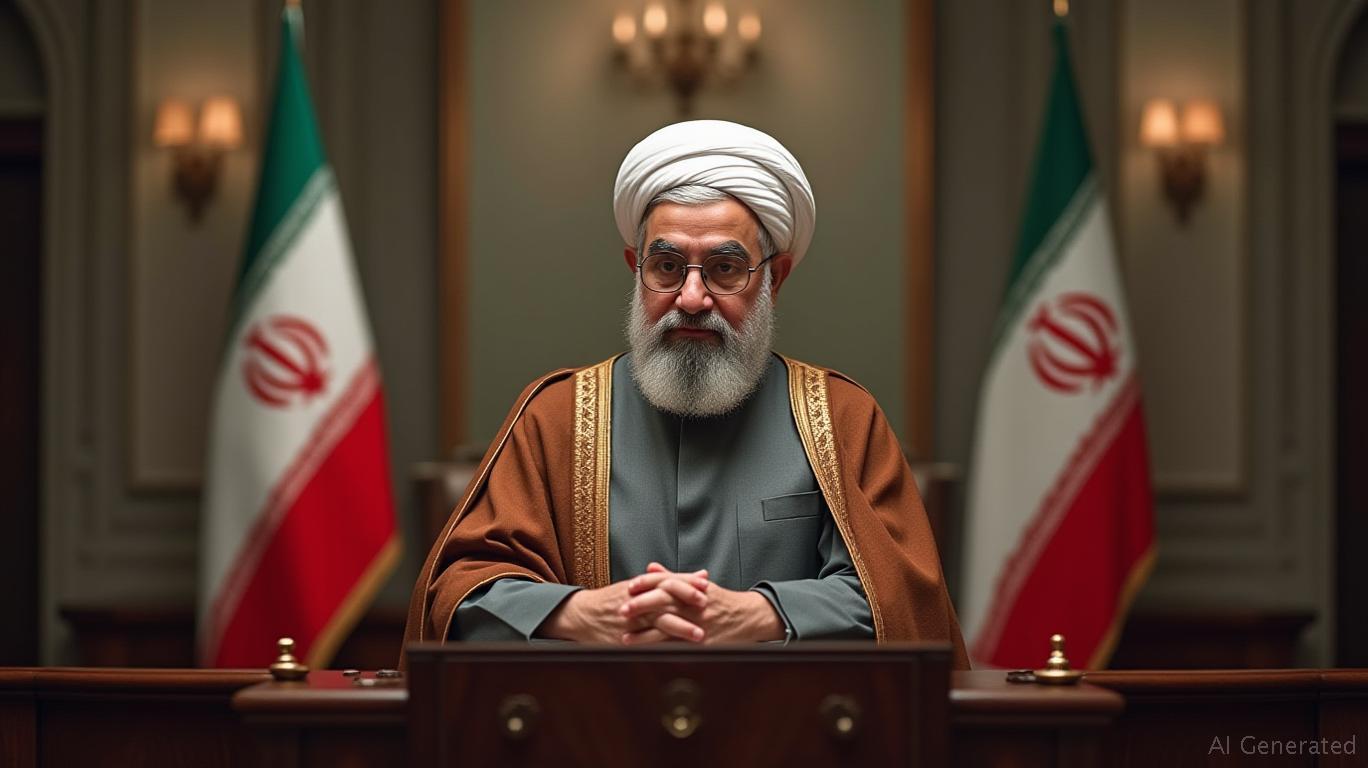Oklo's Strategic Shift: Altman's Exit Paves the Way for AI-Nuclear Synergy
The resignation of Sam Altman, CEO of OpenAI, as chairman of advanced nuclear startup Oklo Inc. marks a pivotal moment in the evolving relationship between artificial intelligence and clean energy. While the move sent Oklo’s stock plummeting 12% in after-hours trading, it may ultimately position the company to capitalize on a growing demand for carbon-free power from the tech sector. The strategic realignment underscores a broader trend: as AI’s energy appetite expands, nuclear innovation is emerging as a critical partner in sustaining its growth.

The Strategic Rationale: Clearing the Path for Partnerships
Altman’s dual role as both Oklo’s chairman and OpenAI’s CEO had created a potential conflict of interest. By stepping down, he removes barriers to collaborations between Oklo and AI firms, including his own company. This is no small matter: hyperscalers like Google, Amazon, and Microsoft are racing to secure reliable, low-carbon energy to power their AI infrastructure. Oklo’s small modular reactors (SMRs), designed to generate 75–100 megawatts or more, offer a scalable solution for these energy-hungry data centers.
The immediate market reaction—Oklo’s stock falling from $12.50 to $11.00 post-announcement—suggests investor skepticism about the leadership change. However, the move aligns with Oklo’s December 2024 deal with Switch, a data center operator, to provide up to 12 gigawatts of power. That agreement alone represents a commitment 160 times larger than Oklo’s current operational capacity, hinting at the scale of demand from the tech sector.
The Tech-Nuclear Nexus: Why AI Needs Nuclear Power
The intersection of AI and nuclear energy is no coincidence. Training large language models (LLMs) consumes vast amounts of electricity; one study estimates that training a single advanced LLM uses as much energy as 100 U.S. households do in a year. With AI workloads projected to grow exponentially, the sector faces a stark choice: rely on fossil fuels or secure clean energy partnerships.
Oklo’s Aurora reactor design, which uses fast fission technology, offers advantages over traditional nuclear plants. Its smaller size allows modular deployment near data centers, reducing transmission losses. Furthermore, Oklo’s collaboration with the Department of Energy on advanced fuel recycling could turn nuclear waste into a resource, addressing both energy and waste management challenges.
Caroline Cochran, Oklo’s COO, emphasized the company’s focus on “strategic partnerships with leading AI companies,” a priority that becomes more feasible without Altman’s dual role. Meanwhile, tech giants like Microsoft are already investing in nuclear startups—Microsoft’s 2022 partnership with Oklo included a $40 million equity stake—highlighting the sector’s recognition of this synergy.
Regulatory Hurdles and Market Risks
Despite its technical progress, Oklo still faces significant challenges. The Nuclear Regulatory Commission’s (NRC) approval process is notoriously slow: the company aims to deploy its first Aurora reactor by the end of the decade, but past projects have faced multi-year delays.
Financial risks loom as well. Oklo’s reliance on the DOE’s Voucher Program—which provides cost-sharing for nuclear projects—carries uncertainty, as federal funding could be subject to political shifts. Additionally, the company has yet to secure partnerships with hyperscalers beyond Switch, a critical gap given that hyperscalers account for ~25% of U.S. data center energy use.
Conclusion: A Risky, but Strategic Gambit
Oklo’s decision to remove Altman from its board is a calculated gamble. The short-term stock dip reflects investor anxiety over leadership changes and execution risks, but the long-term payoff could be substantial. By eliminating potential conflicts, Oklo has opened the door to partnerships that could transform its valuation.
Consider the numbers: if Oklo secures just 5% of the global AI energy market—projected to exceed 500 terawatt-hours annually by 2030—it would need to generate ~25 terawatt-hours. At its 12 GW Switch deal, even partial utilization would position Oklo to meet such targets.
Yet success hinges on overcoming regulatory and financial hurdles. The NRC’s approval of Oklo’s first reactor by 2030 would validate its technology, while securing additional hyperscaler partnerships could catalyze a valuation rebound. For investors, Oklo represents a high-risk, high-reward bet on the future of energy for AI—a future where nuclear innovation may prove as essential as silicon chips.

_0541ea711750289942943.png)
_85d765531750289985587.jpg)






